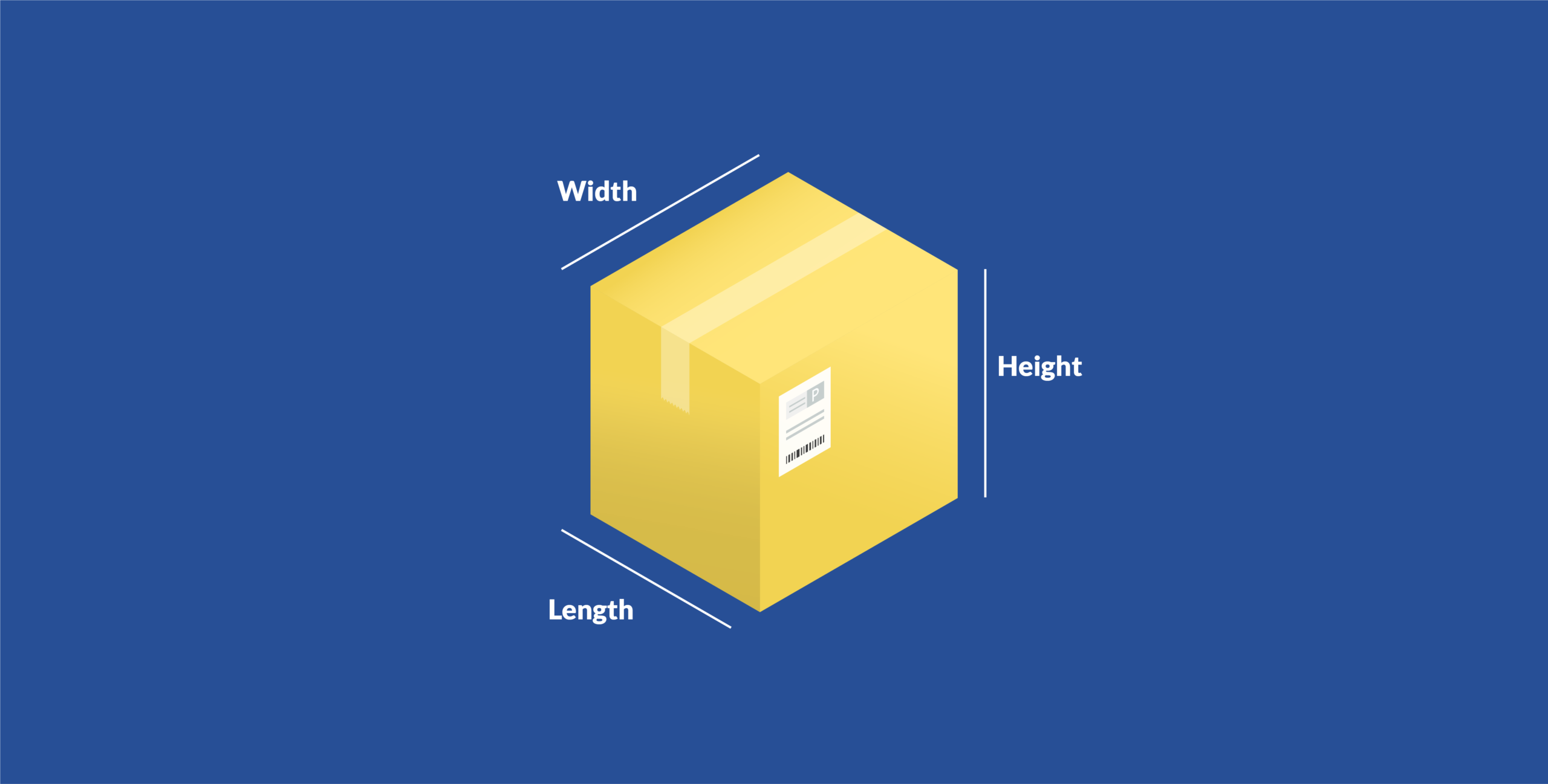The rates in this blog are the 2019 USPS shipping rates. For the current 2023 USPS rates, visit our USPS 2023 Shipping Rate Changes: Flat Rate, Priority, First Class, w/Tables blog!
We’re continuing to dissect the upcoming 2019 USPS shipping rates changes. If you haven’t seen our summary of all USPS shipping rates changes, check that out here. We’ve also touched specifically on the changes to Commercial Base Pricing. Today, we’re diving into the major 2019 Dimensional Weight changes for USPS.
Note: As of October 19, 2022, ShippingEasy now offers the lowest USPSⓇ shipping rates in the industry, and the rates reflected in this blog are prior to this change and may not be accurate. For more information on these new rates, check out our blog!
What is Dimensional Weight (DIM Weight)?
Dimensional Weight pricing applies to larger packages with lower weights. The general idea behind it is that e-commerce merchants pay for the space these packages take up on a truck, rather than the physical weight of the package. If the calculated Dimensional Weight is higher than the physical weight of a package, you are required to pay the higher of the two.
Dimensional Weight changes in pricing for 2019 apply to all domestic Priority Mail, Priority Mail Express, and non-Lightweight Parcel Select packages over one cubic foot.
How is Dimensional Weight Calculated?
First, you need to find out if the package is larger than one cubic foot. The equation for that is:
(L x W x H)/1728
The 1,728 is because there are 1,728 inches in a cubic foot. If the result of the above equation is greater than 1, you need to find out the Dimensional Weight of a package. To do that, you need the Dimensional Weight divisor, which for USPS is now 166 (for FedEx and UPS the divisor is 139 for all sizes).
(L x W x H)/166 = Dimensional weight
If the result of the above equation yields a higher weight than the actual weight of the package you are shipping, you must pay the Dimensional Weight instead. It’s also important to note here that Dimensional Weight will replace what was formerly referred to as Balloon Rate on Priority Mail packages (Priority Mail pieces weighing less than 20 pounds and measuring more than 84 inches, but 108 inches or less, in combined length and girth, charged the price for a piece weighing 20 pounds.).
Let’s look at a couple of examples where this would and would not apply.
Example 1:
- 16 x 12 x 10 package, weight 15 lbs., shipping Zone 3
- Is it larger than one cubic foot: (16 x 12 x 10)/1728 = Yes (1.11 cubic feet)
- Dimensional weight: (16 x 12 x 10)/166 = 11.56 lbs. (round up to 12 lbs.)

In this case, you pay for the actual weight of 15 lbs. rather than the rounded-up Dimensional Weight of 12 lbs.
Example 2:
- 14 x 12 x 14 package, weighing 12 lbs., shipping Zone 4
- Is it larger than one cubic foot: (14 x 12 x 14)/1728 = Yes (1.36 cubic feet)
- Dimensional weight: (14 x 12 x 14)/166 = 14.17 lbs. (round up to 15 lbs.)

In this case, you’d pay the Dimensional Weight of 15 lbs. rather than the 12 lbs. actual weight. This can prove to be extremely costly. Looking at what a Priority Mail package would cost for Zone 4 at 12 lbs. versus 15 lbs. in 2019 increases the shipping cost from $15.93 to $18.42.
If that box were 14 x 14 x 14, the Dimensional Weight would increase to 16.53 lbs. (round up to 17 lbs.) and you’re looking at an increase to $20.35! A couple of inches of box size could cost you $4.42 more to ship a single package.
As you can see, this can multiply quickly and drain any shipping margins you might have.
This change in calculating shipping for larger packages makes it crucial for merchants shipping larger packages that contain potentially lighter items to optimize packaging. If you can reasonably fit items into a smaller package, you’ll absolutely want to explore your options.
Want an easy way to find your package’s dimensional weight? Use our dimensional weight calculator.
What happens if I get it wrong?
Whether you’re in a hurry and didn’t think to measure, or you thought you could sneak one past the USPS, you’ll end up getting charged. In 2017, the USPS implemented Automated Package Verification, which scans and weighs packages as they’re being processed.
What this means to you is should you miss calculating the Dimensional Weight for a larger package, the automated systems used by the USPS will catch it. When they do, your USPS postage account will get debited, which could prove disastrous during a busy period when you rely on the amount of postage you have in your account.
As shown in the above example, at $5.82 per package, your balance could quickly dwindle without you knowing, causing delays in processing or unexpected charges to the card you have set up to fund your USPS account.
Beyond that, USPS will also apply a charge in response to excessive errors, so it’s crucial to your business to get these calculations right.
Love in-depth breakdowns like this? You’ll love our E-commerce Seller’s Guide to the 2020 Shipping Rate Changes. Download your copy now!
ShippingEasy’s software makes avoiding this easy. Entering your box dimensions and package weight into the app ensures that the correct shipping costs are calculated automatically, so you never have to worry about not paying the right amount and having your account charged unexpectedly.
Set yourself up for shipping success and make sure you’re always paying the correct (and best) rates. Try ShippingEasy FREE for 30 days by clicking the button below.
Rob Zaleski
Latest posts by Rob Zaleski (see all)
- USPS 2023 Shipping Rate Changes - November 16, 2023
